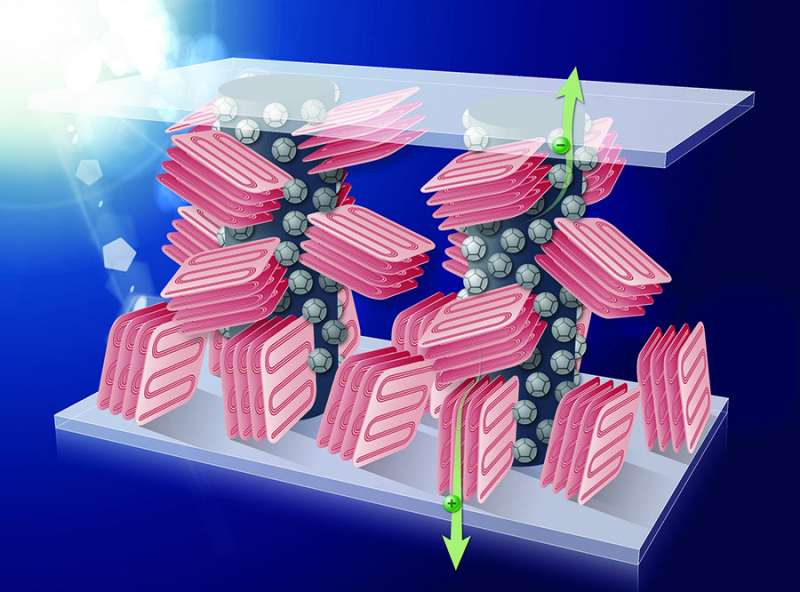Adding an inert polymer to plastic solar cells enables high efficiency and easy production

Polymer plastic solar cells remain an industry priority because of their light weight, flexibility and cost-effectiveness. Now scientists from Stony Brook University and the U.S. Department of Energy's (DOE) Brookhaven National Laboratory (BNL) have demonstrated that these types of solar cells can be more efficient and have more stability based on new research findings.
Led by Miriam Rafailovich, Ph.D., a Distinguished Professor at Stony Brook University, and Chang-Yong Nam, Ph.D., a scientist at BNL and Adjunct Professor at Stony Brook, the research team discovered that by adding a common inert polymer, called polystyrene, these solar cells undergo an optimized internal morphology, resulting in a higher device performance.
The discovery solves a problem with polymer plastic solar cells. Most of these cells require an additive included for high device performance – a non-active small chain molecule to control internal morphology. But the additive is known to cause stability problems under light and heat, thus compromising performance and efficiency.
The new study, published in Advanced Materials Interfaces, demonstrates that replacing the additive with the inert polymer potentially solves this problem. In a previously published paper in Nanoscale, the researchers used a similar approach, but, with a different polymer.
This earlier work illustrated that a newly engineered polymer plastic solar cell increases optimal thickness – a quality that is better suited for industrial production by low-cost coating methods. The significance of this result was featured on the U.S. Department of Energy (DOE) website.
More information: Zhenhua Yang et al. Roles of Interfacial Tension in Regulating Internal Organization of Low Bandgap Polymer Bulk Heterojunction Solar Cells by Polymer Additives, Advanced Materials Interfaces (2018). DOI: 10.1002/admi.201800435
Hongfei Li et al. A new strategy to engineer polymer bulk heterojunction solar cells with thick active layers via self-assembly of the tertiary columnar phase, Nanoscale (2017). DOI: 10.1039/C7NR03789A
Journal information: Nanoscale
Provided by Stony Brook University





















